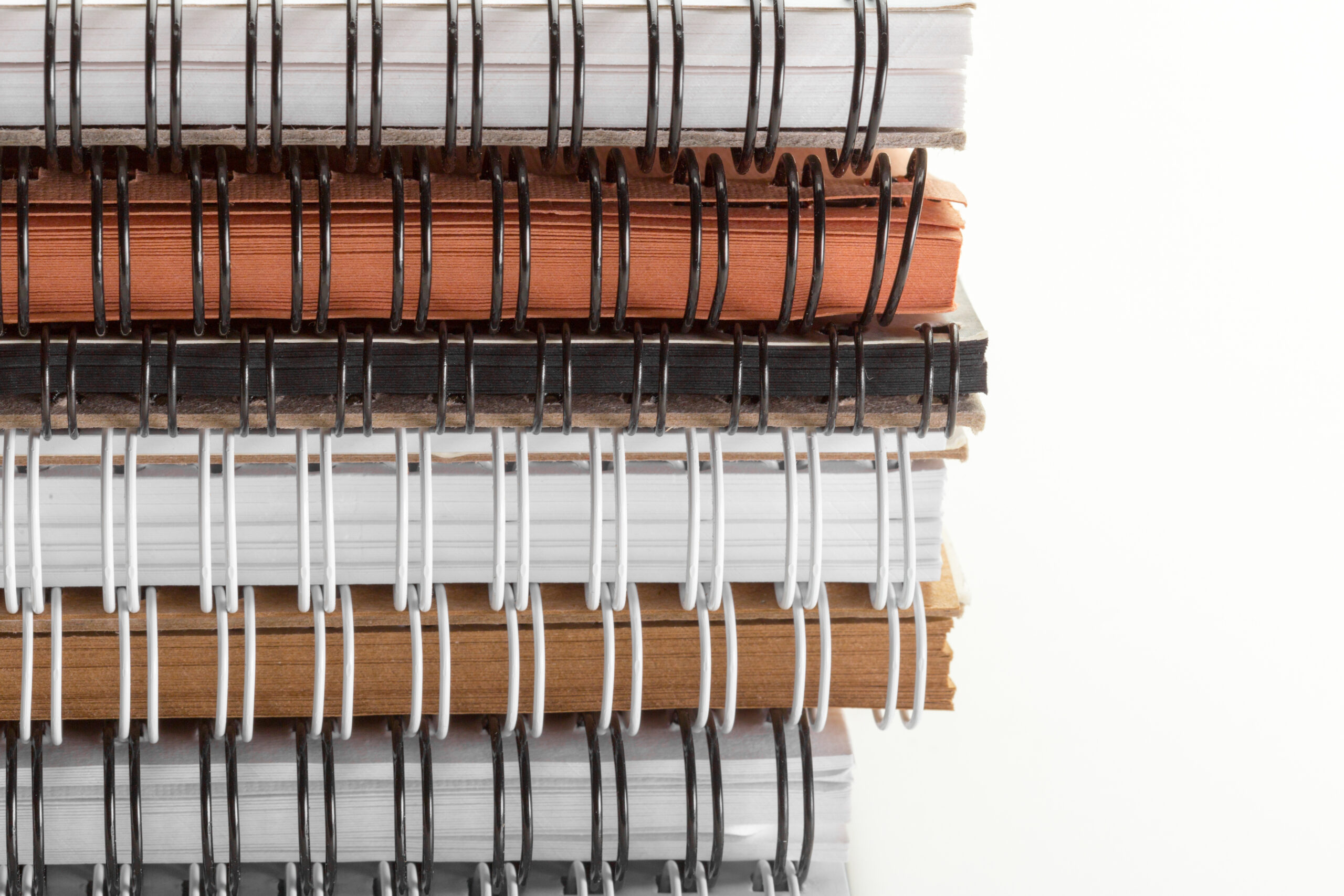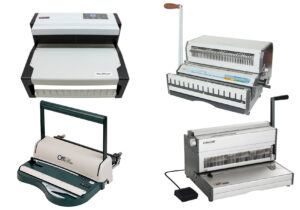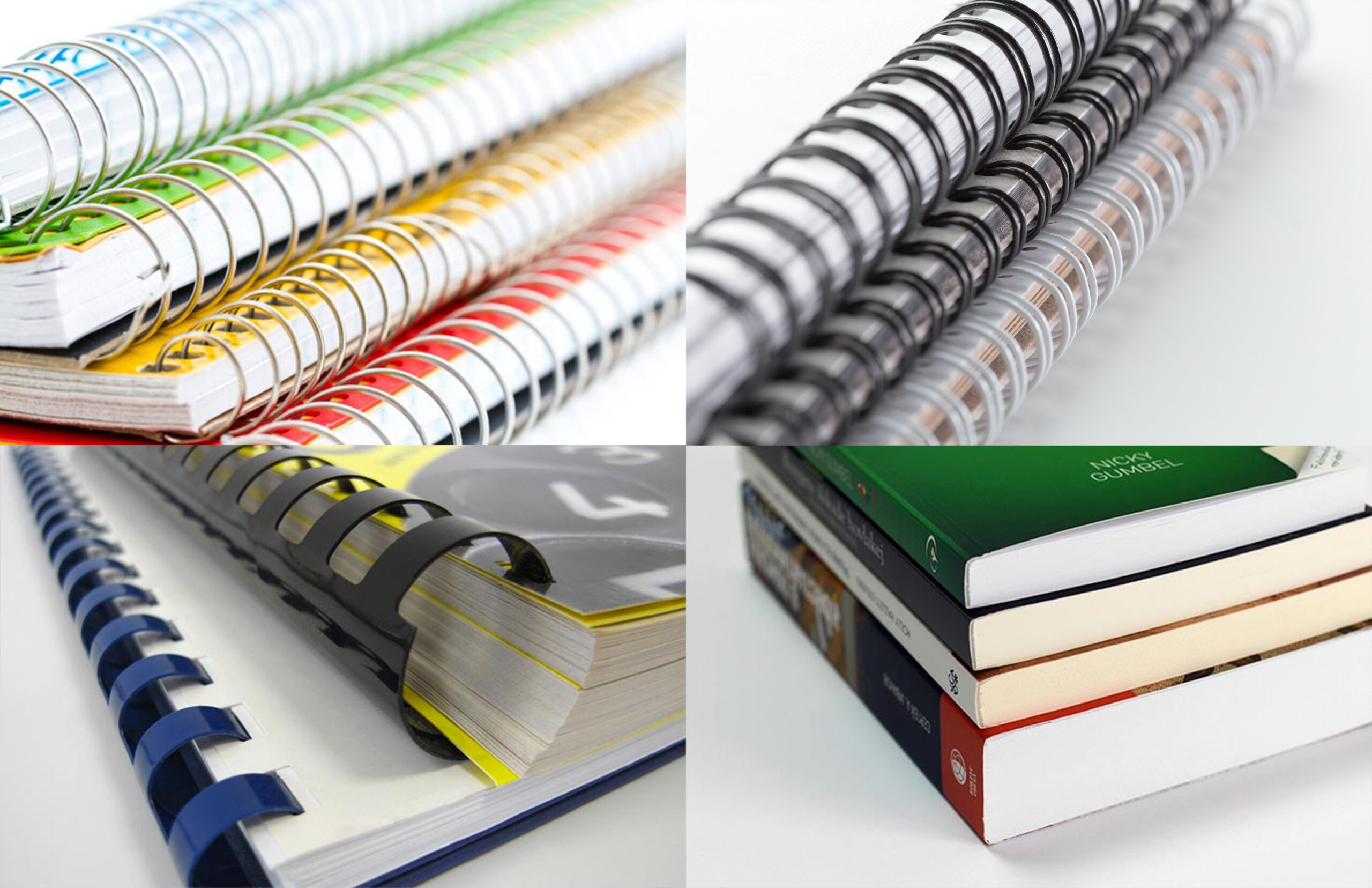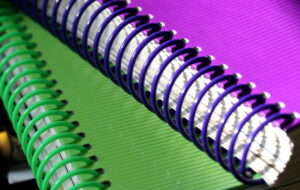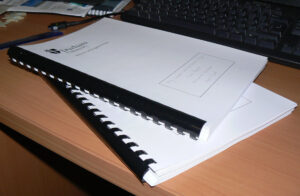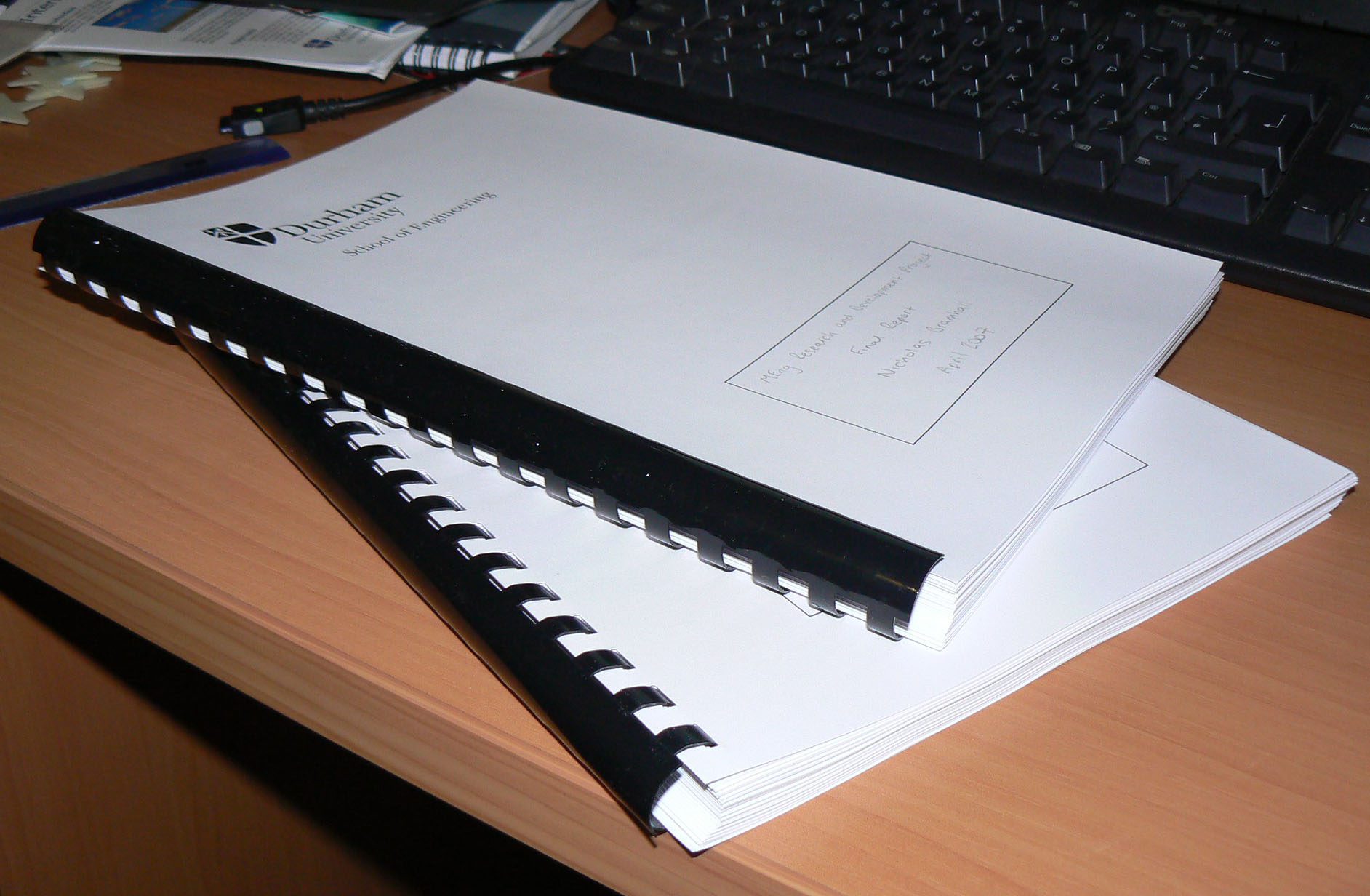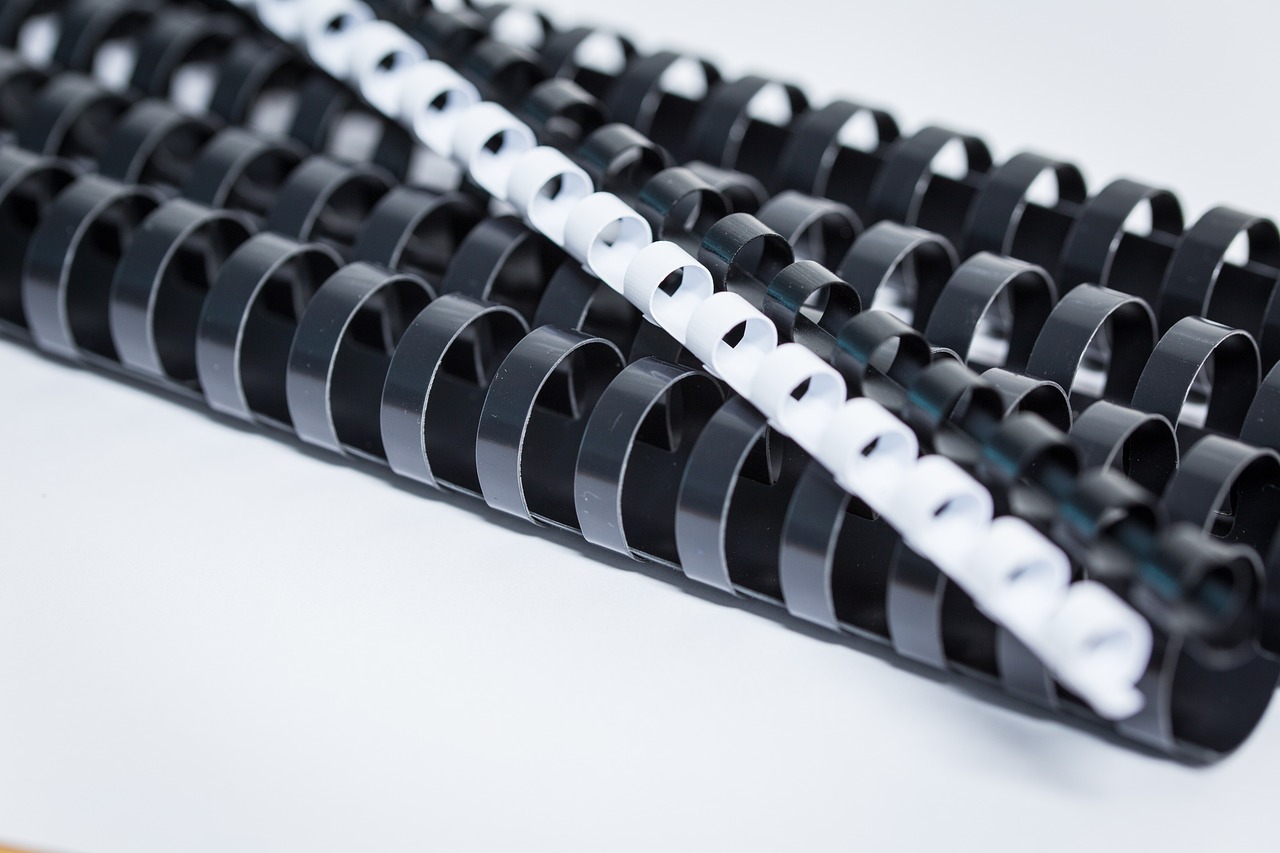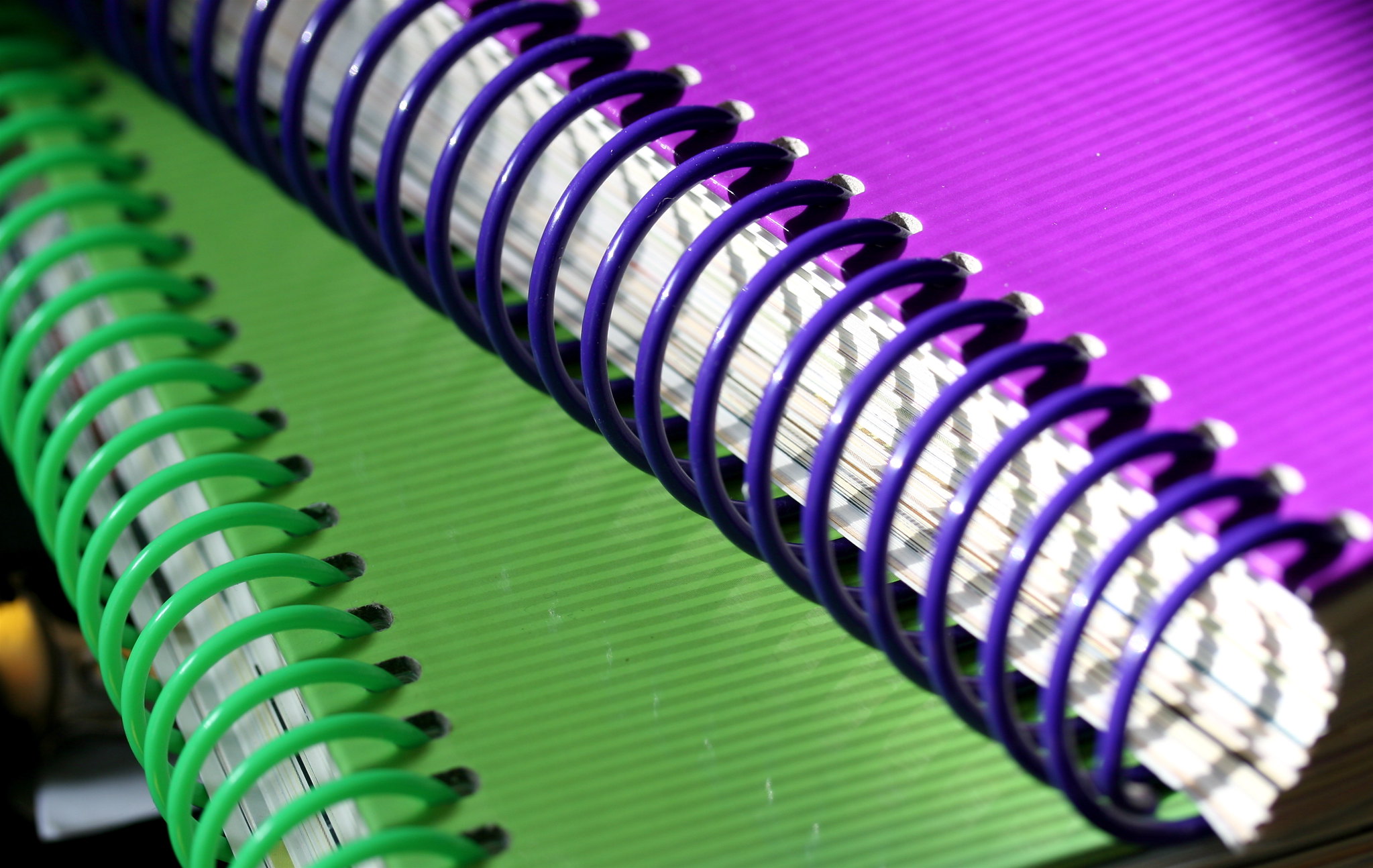Tag: binding machines
Binding 101: What is Wire Binding?
In today’s fast-paced business landscape, staying organized is not just a matter of convenience; it’s often the key to success. Whether you’re a corporate professional, an educator, a marketing specialist or running a printing business, managing printed documents, brochures, and other materials is a daily necessity. This is where binding comes into play, offering a way to keep your materials in order and presentable. Among the array of binding methods, wire binding stands out as a practical and versatile choice.
Wire binding has found favour in a multitude of industries and sectors. From corporate offices to educational institutions, advertising agencies, and print shops, wire binding is a solution for those who seek not only practicality but also a touch of sophistication in their printed materials. In this article, we’ll delve into the world of wire binding, exploring its applications and advantages, and discovering why it’s a valuable asset for professionals in diverse sectors and industries.
What is Wire Binding?
Wire binding, also known as wire-o binding, is a popular and practical method of securing printed documents and materials. This binding technique involves using a double-loop wire spine, often made of metal, to hold the pages together. To achieve wire binding, small, evenly spaced holes are punched along the edge of the document’s pages. The double-loop wire is then inserted through these holes, forming a secure and professional-looking binding.
The beauty of wire binding lies in its simplicity and effectiveness. It allows for a 360-degree page rotation, making it easy to lay the document flat or fold it back completely, which is particularly advantageous for presentations and reference materials. Additionally, wire binding provides a durable and tamper-resistant binding that ensures pages remain intact and in the correct order. This method is commonly used for binding reports, manuals, calendars, brochures, and other documents where a clean and professional finish is desired. Its versatility and elegant appearance have made wire binding a preferred choice across a range of industries, from business and education to advertising and publishing.
Why is Binding Important?
Binding serves a pivotal role in diverse professional and educational contexts, extending its significance well beyond the act of simply holding documents together. It plays a crucial part in offices, brochure printing, and various other applications.
First and foremost, binding is a cornerstone of organization and presentation. It not only maintains the neat arrangement of documents but also elevates their visual appeal, resulting in a polished and professional appearance. In office environments, well-organized documents streamline information access, fostering efficiency and productivity. Additionally, binding methods like wire binding or comb binding offer protective benefits, shielding documents from the wear and tear associated with frequent use. Binding covers and sturdy bindings contribute to the documents’ durability, ensuring they stay presentable over an extended period.
Secondly, binding adds a layer of tamper resistance, safeguarding the integrity of documents. This aspect holds particular importance in fields such as law, finance, and confidential settings, where maintaining the authenticity and confidentiality of information is paramount. Furthermore, binding enhances branding and marketing efforts for businesses. Brochures and promotional materials, when professionally bound, create a lasting impression on clients and customers, elevating the overall impact of the materials. Accessible and easy to handle, bound documents, whether for training or education, facilitate a seamless reading experience. Lastly, binding methods support the long-term preservation of documents, ensuring they remain in good condition, ready for reference or reuse when needed.
In essence, binding elevates the quality, functionality, and longevity of printed materials, enhancing their effectiveness as tools for communication, reference, and presentation. Whether in an office, classroom or within marketing strategies, binding stands as an essential component in ensuring that printed materials fulfill their intended purpose to the fullest extent.
Best Wire Binding Machines
Here are some of the best wire-binding machines:
- WireBind W20A Wire Binding Machine
- Supu CW430E Electric Wire-o Punching Machine with Manual Closer
- WireMac-E31 Akiles Electric Punch Manual Wire
- Akiles WBM532 Modular Wire Binding Machine
- Akiles FlexiCloser 2 Wire Binding Machine
Tips and Reminders When Using Wire Binding
Here are some quick tips and reminders for a successful wire-binding process::
- Choose the Right Wire: Select the correct wire size and colour for your document’s thickness and design.
- Precise Hole Punching: Use an accurate hole-punching method to ensure even and centred holes in your pages.
- Secure Wire Closure: Close the wire spine securely without over-compressing, using your machine’s wire closer or binding pliers.
- Test Before Binding: Practice on scrap paper to ensure hole alignment and spacing are correct before binding your final document.
- Quality Control: After binding, review your document to confirm secure binding, proper alignment, and no missing or damaged pages.
In conclusion, wire binding is a versatile and professional solution for securing documents, offering durability, tamper resistance, and a polished finish. Its wide-ranging applications across various industries make it a valuable asset for businesses, educators, and organizations. As you explore the world of wire binding and its numerous advantages, you’ll find that this method not only keeps your documents organized but also elevates their presentation, ensuring a lasting impact in the professional realm. So, whether you’re producing reports, training materials, calendars, or marketing brochures, wire binding stands as a trusted method for creating well-organized, impressive, and long-lasting documents.
If you’re a business owner in need of the best binding machines to enhance your document organization and presentation, look no further. Our comprehensive range of high-quality binding equipment is designed to meet your specific needs, whether you run an office, a binding business, or a printing venture. Streamline your operations, impress clients, and leave a lasting impression with our top-notch binding solutions. Contact us today to explore the perfect binding machine that aligns with your requirements, and take the first step toward optimizing your document management and presentation capabilities.

